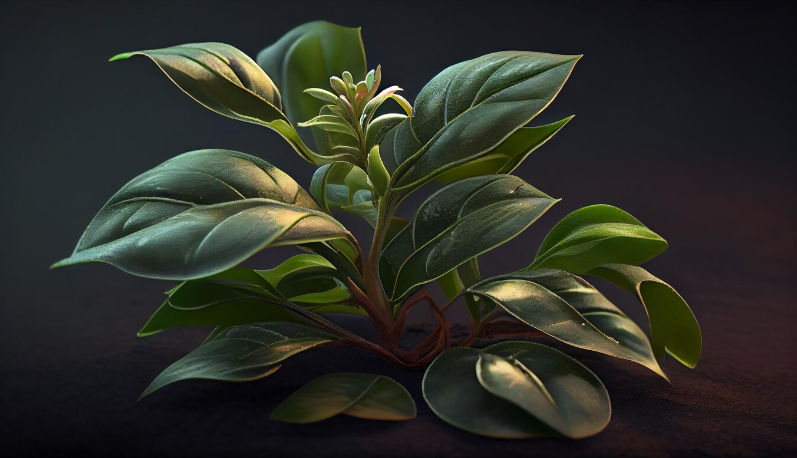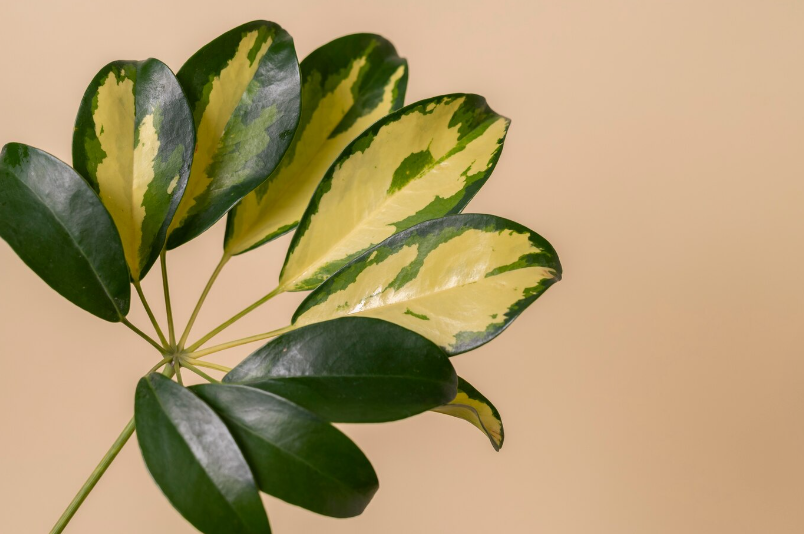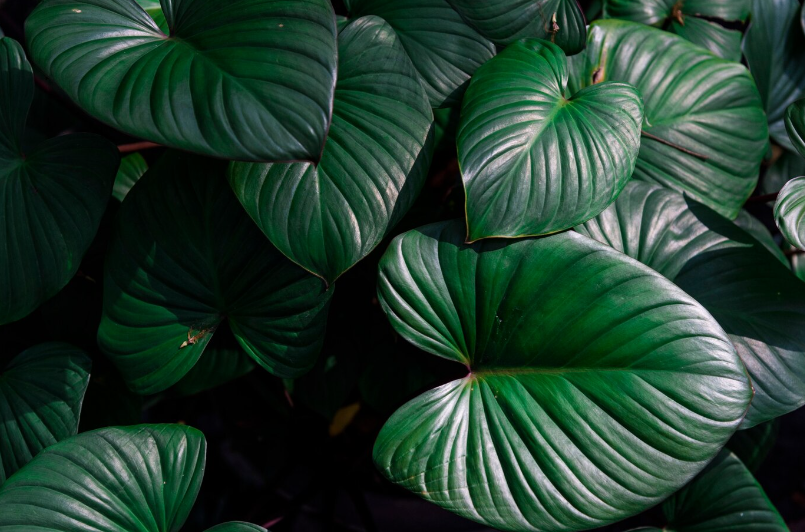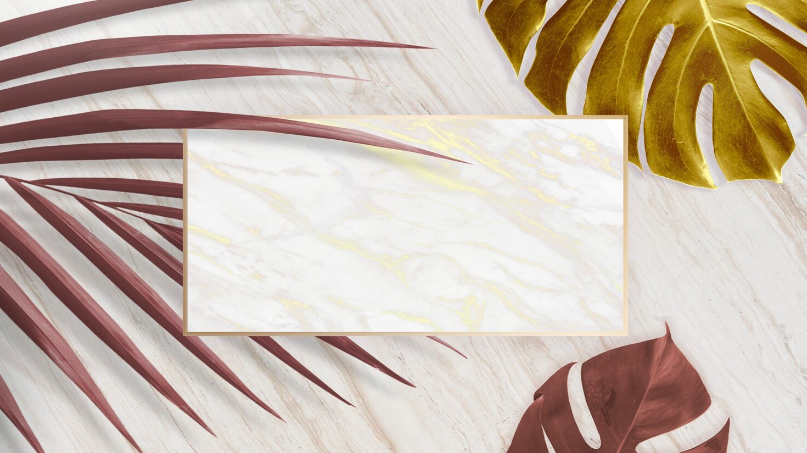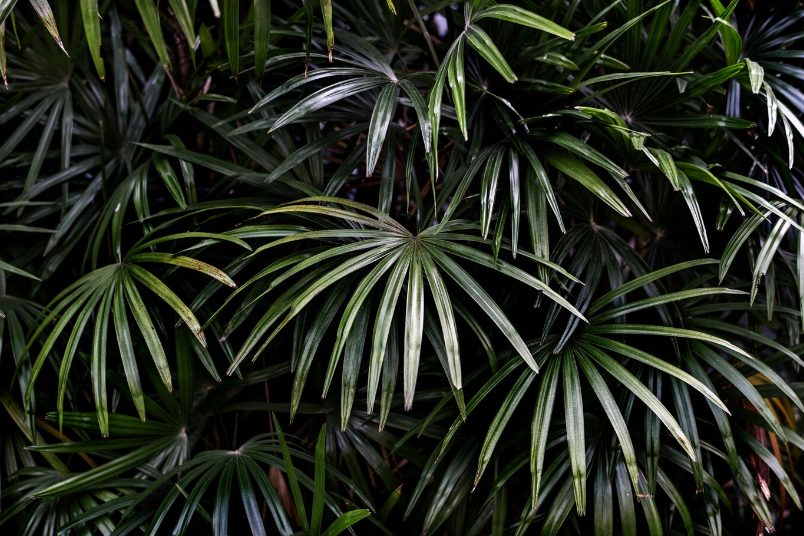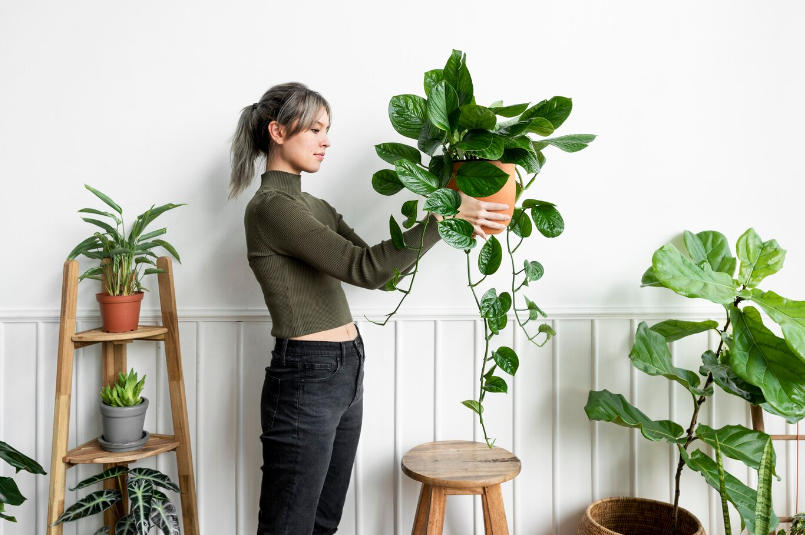Philodendrons: Nature’s Air Purifiers
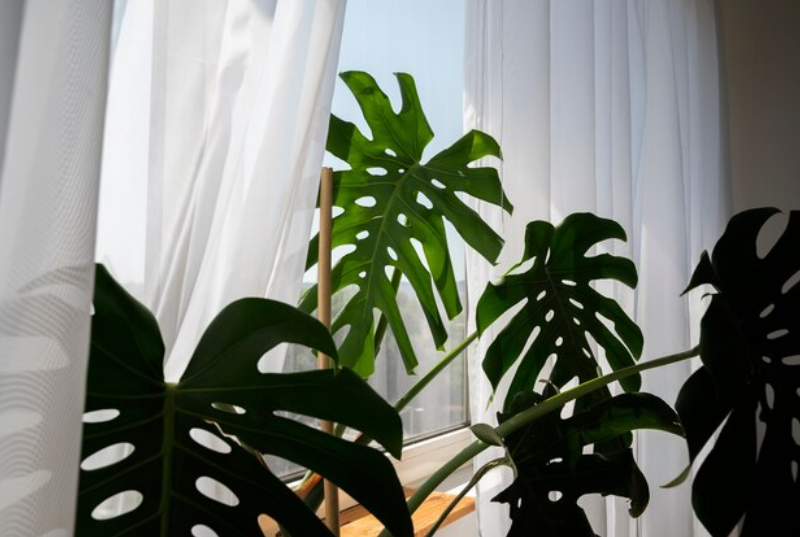
Unlock the power of nature with Philodendrons – Nature’s Air Purifiers. These beautiful and hardy indoor plants not only add a touch of green to your space, but they also actively work to cleanse the air you breathe.
Did you know that indoor air can be more polluted than outdoor air? Chemicals from cleaning products, furniture, and even the air fresheners we use can release harmful toxins into the air. But fear not, because with Philodendrons in your home or office, you can transform your space into a fresh and clean oasis.
Philodendrons are renowned for their ability to remove toxins such as formaldehyde, benzene, and trichloroethylene from the air. These plants act as natural air filters, absorbing these harmful substances and releasing pure, clean oxygen back into your environment.
Not only do Philodendrons cleanse the air, but they also bring a sense of calm and tranquility to any space. Their lush green leaves create a soothing atmosphere, promoting relaxation and reducing stress. Plus, caring for these plants is a breeze, making them the ideal choice for busy individuals seeking a touch of nature indoors.
Choose from our wide variety of Philodendrons and experience the power of nature’s air purifiers in your home or office today. Breathe easy with Philodendrons – your ticket to a healthier, happier environment.
Understanding Air Purification and Philodendrons
Philodendrons are not only attractive houseplants, but they also have the ability to purify the air. They remove harmful toxins such as formaldehyde, benzene, and trichloroethylene, which are commonly found in household products, furniture, and carpets. These chemicals can have detrimental effects on our health, causing allergies, respiratory problems, and even contributing to the development of chronic conditions.
One of the reasons Philodendrons are effective air purifiers is because of their large and glossy leaves. The leaves act as natural filters, trapping and absorbing pollutants from the surrounding air. Additionally, Philodendrons release oxygen, which helps improve overall air quality.
Another benefit of Philodendrons is their low maintenance requirements. They are easy to care for and can thrive in various indoor environments. They do well in low light conditions, making them suitable for rooms with minimal natural light. Philodendrons also require minimal watering and can tolerate periods of drought, further adding to their appeal as air purifying houseplants.
Bringing nature indoors not only enhances the aesthetic appeal of our living and working spaces but also provides health benefits. By decorating our homes and offices with Philodendrons, we can create a healthier and more vibrant environment. So, why not make a positive change and start enjoying cleaner and fresher air with Philodendrons Nature’s Air Purifiers?
The Science of Air Purification in Houseplants
Have you ever wondered how houseplants can improve the air quality in your home? It turns out that there is a scientific explanation for this phenomenon.
Plants have the amazing ability to absorb and filter harmful toxins from the air through a process called photosynthesis. During photosynthesis, plants take in carbon dioxide and release oxygen, but they also absorb volatile organic compounds (VOCs) and other pollutants.
One study conducted by NASA found that certain houseplants, such as the Philodendron, can remove significant amounts of formaldehyde, benzene, and trichloroethylene from the air. These chemicals are commonly found in household items like carpets, cleaning products, and furniture.
The Philodendron is particularly effective at removing formaldehyde, a compound that can cause respiratory irritation and other health issues. So, not only do these beautiful plants add a touch of nature to your space, but they also contribute to a healthier indoor environment.
Additionally, houseplants help to increase humidity in the air, which can be beneficial for people with dry skin or respiratory conditions. The moisture released by these plants can also help to reduce symptoms of allergies and asthma.
When it comes to choosing houseplants for air purification, it’s important to consider the size of the space and the amount of light it receives. The Philodendron is a versatile plant that can thrive in both low-light and bright environments, making it a great option for any room in your home.
So, if you’re looking for a natural and stylish way to improve the air quality in your home, consider adding a Philodendron or two. Not only will they enhance the aesthetic of your space, but they will also provide you with the many health benefits of indoor air purification. Give yourself and your loved ones the gift of cleaner, fresher air with Philodendrons Nature’s Air Purifiers.
How Philodendrons Contribute to Cleaner Air
The Philodendrons Nature’s Air Purifiers are not only beautiful houseplants, they also play a crucial role in improving the air quality in your home or office.
Philodendrons are known for their ability to remove harmful pollutants from the air. They have a remarkable capacity to filter toxins and make the air cleaner and healthier to breathe.
These remarkable plants absorb high levels of airborne pollutants such as formaldehyde, benzene, and trichloroethylene, which are commonly found in household products, furniture, and carpets. By effectively removing these harmful substances, Philodendrons contribute to a cleaner and safer indoor environment.
Additionally, Philodendrons release oxygen and increase humidity, creating a more refreshing and pleasant atmosphere. They act as natural air humidifiers, helping to combat dryness, especially in air-conditioned or heated spaces.
Another advantage of having Philodendrons as air purifiers is their low maintenance. They are easy to care for and require minimal attention. Just a little water and some indirect sunlight, and these plants will thrive and continue purifying the air for years to come.
In conclusion, by adding Philodendrons Nature’s Air Purifiers to your living or working space, you are not only enhancing the aesthetics but also contributing to a cleaner, healthier, and more refreshing environment. Breathe easier with Philodendrons!
The Specifics of Philodendron Brasil as an Air Purifier
The Philodendron Brasil is an exquisite plant that not only enhances the beauty of your living space but also serves as a powerful air purifier. This tropical plant is known for its stunning green and yellow leaves, which can create a lively and fresh atmosphere in any room.
One of the key features of Philodendron Brasil is its ability to remove various toxins from the air. It efficiently eliminates formaldehyde, benzene, xylene, and other harmful volatile organic compounds (VOCs) that can be found in common household items like furniture, carpets, and cleaning products.
The plant’s large leaves play a crucial role in this air-purifying process. The leaves possess tiny pores called stomata, which help the plant absorb air pollutants and convert them into harmless substances. This natural filtration system ensures that you and your loved ones breathe in clean and fresh air at all times.
Additionally, the Philodendron Brasil acts as a humidifier, increasing the moisture levels in the air. This is especially beneficial for those living in dry climates or facing respiratory issues, as it helps to soothe dry throats and reduce the risk of allergies and respiratory infections.
It’s important to note that Philodendron Brasil is an easy-to-maintain plant, making it an ideal choice for both experienced and novice plant owners. It thrives in bright indirect light but can also tolerate lower light conditions. Regular watering and occasional misting will keep this beautiful plant happy and healthy.
Bring Nature’s Air Purifier into your home with Philodendron Brasil and experience the numerous benefits it offers. Not only will it enhance the aesthetic appeal of your living space, but it will also create a healthier environment for you and your loved ones.
Own a Philodendron Brasil today, and breathe in the freshness!
Top Air-Purifying Plants in Comparison to Philodendrons
While Philodendrons are widely known for their air-purifying abilities, there are several other plants that also excel in this regard. Here are some top air-purifying plants to consider:
- Snake Plant (Sansevieria): Commonly known as the Snake Plant, Sansevierias are excellent air purifiers. They release oxygen and absorb carbon dioxide at night, making them perfect for bedrooms.
- Pothos (Epipremnum aureum): Pothos plants are not only beautiful but also great at removing toxins from the air. They are easy to care for and can tolerate low light conditions.
- Peace Lily (Spathiphyllum): Peace Lilies are known for their ability to remove common household toxins like formaldehyde, benzene, and trichloroethylene. They also add a touch of elegance to any room.
- Spider Plant (Chlorophytum comosum): Spider Plants are known for their long, arching leaves and small white flowers. They are excellent air purifiers and can remove harmful pollutants such as formaldehyde and xylene.
- Boston Fern (Nephrolepis exaltata): Boston Ferns are not only visually appealing but also highly effective at removing air pollutants. They can help improve indoor air quality and add a tropical touch to your home.
These plants, along with Philodendrons, can be a great addition to your home or office. Not only do they bring a touch of nature indoors, but they also help create a healthier and fresher environment for you and your loved ones.
The Most Effective Air-Purifying Plants Known Today
When it comes to improving air quality and creating a healthier environment, few things are as effective as nature itself. One of the simplest and most natural ways to purify the air in your home or office is by incorporating air-purifying plants into your space.
Not only do plants add beauty and a touch of nature to any setting, but they also have the remarkable ability to filter out harmful toxins and pollutants. Here are some of the most effective air-purifying plants known today:
- Philodendron
- Snake Plant
- Pothos
- Spider Plant
- Peace Lily
- English Ivy
- Bamboo Palm
- Aloe Vera
Philodendrons are known for their ability to effectively remove formaldehyde from the air. They are easy to care for and can thrive in a variety of conditions. Snake plants, on the other hand, are known for their ability to absorb and convert carbon dioxide into oxygen during the night, making them an ideal plant for bedrooms.
Pothos is a versatile and low-maintenance plant that can help to remove benzene, xylene, and toluene from the air. Spider plants are excellent at removing formaldehyde and carbon monoxide. Peace lilies are not only beautiful but can also help to remove a wide range of indoor air pollutants.
English ivy is known for its ability to remove airborne mold and alleviate symptoms of allergies. Bamboo palms are excellent at removing benzene, trichloroethylene, and formaldehyde. Aloe vera not only purifies the air but also has healing properties and can help to improve indoor air quality.
By incorporating these air-purifying plants into your space, you can enjoy cleaner and fresher air while adding a touch of greenery to your surroundings. Take the first step towards a healthier environment by investing in nature’s own air purifiers – Philodendrons Nature’s Air Purifiers.
Air Purification: Philodendron vs. Snake Plant
When it comes to improving the air quality in your home or office, you can’t go wrong with indoor plants. They not only add an aesthetic touch to any space, but they also have the ability to purify the air we breathe. Among the most popular air-purifying plants are the Philodendrons and Snake Plants. Both of these plants are easy to care for and can make a significant difference in the quality of the air you breathe.
Philodendrons are known for their large, glossy leaves and are often used as decorative plants. However, they also have the ability to remove harmful toxins such as formaldehyde from the air. Formaldehyde is a common indoor pollutant that can be found in furniture, carpets, and household cleaners. By having a Philodendron in your space, you can reduce the levels of formaldehyde and create a healthier environment.
Snake Plants, also known as Sansevierias, are another excellent choice for air purification. These plants have long, sword-shaped leaves, and they are highly effective in removing toxins from the air, including benzene, trichloroethylene, and xylene. These chemicals can be found in various household products and can have harmful effects on our health. Snake Plants act as natural air filters, absorbing these pollutants and helping to create cleaner, fresher air.
| Philodendron | Snake Plant |
|---|---|
| Removes formaldehyde from the air | Removes benzene, trichloroethylene, and xylene from the air |
| Large, glossy leaves | Long, sword-shaped leaves |
| Easy to care for | Low maintenance |
| Creates a healthier indoor environment | Acts as a natural air filter |
So, whether you choose a Philodendron or a Snake Plant, you can be sure that you are bringing a natural air purifier into your space. Not only will these plants add beauty to your surroundings, but they will also help improve the air you breathe by removing harmful toxins. Invest in a Philodendron or Snake Plant today and enjoy the benefits of cleaner, fresher air.
The Role of Monstera and Aloe Vera in Air Detoxification
In addition to the Philodendrons, Monstera and Aloe Vera are two popular plants that also play a significant role in air detoxification. These plants are not only aesthetically pleasing but have amazing air-cleansing properties as well.
Monstera plants, also known as Swiss Cheese Plants, are famous for their large, glossy leaves with unique holes and splits. This distinctive feature allows the Monstera plant to maximize its air-purifying capabilities by absorbing harmful airborne toxins. The plant’s leaves act as natural filters, trapping pollutants and releasing fresh, oxygen-rich air.
Aloe Vera, a succulent plant with thick, fleshy leaves, is highly regarded for its numerous health benefits, but it also contributes to air detoxification. Aloe Vera leaves absorb carbon dioxide during photosynthesis and release oxygen. Additionally, Aloe Vera plants have been found to filter out formaldehyde and benzene, which are common indoor air pollutants.
Both Monstera and Aloe Vera are low-maintenance plants that thrive in various indoor settings. Their air detoxifying properties make them excellent additions to any space, enhancing the overall air quality and promoting a healthier living environment.
If you are looking to purify the air in your home or office, consider incorporating Monstera and Aloe Vera plants along with our Philodendron collection. Together, these plants will create a natural and balanced indoor ecosystem that not only improves air quality but also adds beauty and serenity to your surroundings.
The Significance of Oxygen Release in Plants
Plants are not just beautiful decorations that make our homes and offices more inviting, but they also play a vital role in creating a healthier environment. One of the most significant benefits of having plants around us is their ability to release oxygen.
Oxygen is a life-giving element that is essential for all living organisms, including humans. Without oxygen, life as we know it would cease to exist. Plants produce oxygen through a process called photosynthesis. During photosynthesis, plants use sunlight, water, and carbon dioxide to produce glucose (sugar) and oxygen.
The oxygen released by plants is crucial for maintaining a balanced and healthy ecosystem. It helps to purify the air by removing harmful substances and pollutants, such as carbon monoxide and formaldehyde. In fact, studies have shown that having plants indoors can improve air quality by reducing the levels of indoor air pollutants.
Furthermore, the oxygen released by plants also plays a key role in human health. Breathing in clean air with higher oxygen levels has numerous benefits for our physical and mental well-being. It can improve our respiratory function, boost our immune system, and enhance our overall cognitive function.
Indoor plants, like the Philodendrons Nature’s Air Purifiers, are particularly effective at releasing oxygen and purifying the air. Their large leaves and extensive root systems enable them to absorb more carbon dioxide and release more oxygen compared to other plants.
To maximize the oxygen-releasing benefits of plants, it is essential to provide them with proper care and maintenance. Regular watering, sufficient sunlight, and the right type of soil are necessary for their growth and oxygen production. By taking care of our plants, we can reap the rewards of cleaner and healthier air.
So, if you’re looking for a natural and effective way to improve the air quality in your home or office, consider adding the Philodendrons Nature’s Air Purifiers to your space. Not only will they beautify your surroundings, but they will also fill the air with fresh and oxygen-rich air, creating a healthier and more vibrant environment.
Which Plants Provide Oxygen Around the Clock?
While all plants produce oxygen as a byproduct of photosynthesis during the day, certain plants continue to release oxygen even at night. These plants have the unique ability to perform a process called “crassulacean acid metabolism” or CAM, which allows them to store carbon dioxide during the night and release oxygen during the day and night.
Here are some plants that provide oxygen around the clock:
- Snake Plant (Sansevieria trifasciata): This popular houseplant is known for its ability to purify the air by removing toxins such as formaldehyde, benzene, and trichloroethylene. It releases oxygen during the night, making it an excellent choice for bedrooms.
- Aloe Vera (Aloe barbadensis): Not only does this succulent have numerous health benefits, but it also releases oxygen at night. Aloe vera is easy to care for and can thrive even in low-light conditions.
- Peace Lily (Spathiphyllum): This elegant flowering plant not only adds beauty to any space but also helps in improving indoor air quality. It releases oxygen at night and is known for its ability to remove pollutants such as benzene, formaldehyde, and trichloroethylene.
- Spider Plant (Chlorophytum comosum): With its long, arching leaves adorned with white stripes, the spider plant is a popular choice for indoor gardening. It releases oxygen at night and is effective in removing toxins like formaldehyde and xylene from the air.
- Gerbera Daisy (Gerbera jamesonii): This vibrant flowering plant not only adds color to your home but also releases oxygen at night. It is known for its ability to remove benzene, formaldehyde, and trichloroethylene from the air.
These plants are not only aesthetically pleasing but also contribute to a healthier indoor environment by providing oxygen 24/7. Incorporating these plants into your home or office can help improve air quality and promote a sense of well-being.
Philodendron’s Oxygen Production: Myths and Facts
When it comes to indoor plants, Philodendrons are a popular choice for their aesthetic appeal and their ability to purify the air. However, there are many myths and misconceptions surrounding the oxygen production of Philodendrons. In this article, we will separate fact from fiction and explore the true benefits of having Philodendrons in your home. Delve deeper into the world of Philodendron Micans, known for its stunning foliage.
Myth: Philodendrons produce a significant amount of oxygen.
While it is true that plants produce oxygen through photosynthesis, the amount of oxygen produced by indoor plants like Philodendrons is relatively small compared to their overall oxygen consumption. The oxygen produced by Philodendrons is not enough to significantly increase the oxygen levels in your home.
Fact: Philodendrons can help improve indoor air quality.
Although Philodendrons may not produce a substantial amount of oxygen, they are still effective at improving indoor air quality. Through a process called transpiration, Philodendrons release water vapor into the air, which can help increase humidity levels. Additionally, Philodendrons can absorb harmful volatile organic compounds (VOCs) present in the air, thereby reducing air pollution in your home.
Myth: Philodendrons release oxygen only during the day.
Contrary to popular belief, Philodendrons do not stop producing oxygen at night. While it is true that plants primarily release oxygen during daylight hours, they also continue to perform respiration, consuming oxygen and releasing carbon dioxide, throughout the day and night. Therefore, the oxygen levels in your home will not be significantly affected by the time of day.
Fact: Philodendrons thrive in low-light conditions.
One of the reasons why Philodendrons are so popular as indoor plants is their ability to tolerate low-light conditions. This makes them an excellent choice for homes and offices with limited natural light. However, it’s important to note that Philodendrons still require some indirect light to thrive and grow properly.
Myth: Philodendrons are toxic to pets and children.
While it is true that certain parts of the Philodendron plant can be toxic if ingested, the level of toxicity varies depending on the specific species. Some Philodendron species, like the Philodendron hederaceum, are considered mildly toxic, while others, like the Philodendron bipinnatifidum, are more toxic. It is important to keep Philodendrons out of reach of pets and children to avoid any potential health risks.
In conclusion, while Philodendrons may not be the highest oxygen-producing plants, they still offer numerous benefits for indoor environments. From improving air quality to thriving in low-light conditions, Philodendrons are a versatile and beautiful addition to any home or office.
Calculating the Number of Plants for Optimal Air Purification
When it comes to purifying the air in our homes or office spaces, having the right number of Philodendrons Nature’s Air Purifiers is crucial. These amazing plants have a natural ability to remove toxins and impurities from the air, creating a healthier and more vibrant environment for us to enjoy.
But how many plants do you really need to achieve optimal air purification? Well, it depends on a few factors such as the size of the space and the level of pollutants present in the air. Luckily, we have a simple formula to help you calculate the ideal number of plants for your specific needs.
| Space Size | Number of Plants |
|---|---|
| Small Room (up to 100 sq. ft.) | 2-3 plants |
| Medium Room (up to 250 sq. ft.) | 4-6 plants |
| Large Room (up to 500 sq. ft.) | 8-12 plants |
| Open Space (up to 1000 sq. ft.) | 14-20 plants |
Of course, these recommendations are just a general guideline. If you have a particularly polluted environment or want to achieve maximum air purification, you may want to consider adding a few extra plants.
Remember, Philodendrons Nature’s Air Purifiers not only provide us with cleaner air but also add a touch of natural beauty to our spaces. So go ahead, invest in these amazing plants, and enjoy a breath of fresh air every day!
Philodendrons in the Home: Safety and Health Benefits
Philodendrons are not only beautiful houseplants that add a touch of nature to your home, but they also offer numerous safety and health benefits. These versatile plants not only improve the air quality inside your home, but they also have medicinal properties that can boost your overall well-being.
One of the major benefits of having philodendrons in your home is their ability to purify the air. They are highly effective at removing toxins and pollutants, such as formaldehyde and benzene, from the air. The large surface area of their leaves allows them to absorb these harmful substances, improving the quality of the air you breathe.
In addition to their air-purifying abilities, philodendrons have been found to reduce stress and improve mental health. The presence of plants in indoor spaces has been shown to have a calming effect, helping to lower blood pressure and reduce anxiety. Having philodendrons in your home can create a peaceful and tranquil atmosphere, promoting relaxation and improving your overall well-being.
Furthermore, philodendrons have been used in traditional medicine for centuries due to their various health benefits. Some varieties of philodendrons have antibacterial properties and have been used to treat wounds and infections. The juice extracted from certain philodendron leaves can be applied topically to relieve skin irritations and promote healing.
Incorporating philodendrons into your home decor is not only aesthetically pleasing but also beneficial for your health. These plants are easy to care for and can thrive in a variety of indoor environments. Whether you place them in your living room, bedroom, or office, philodendrons will not only enhance the beauty of your space but also provide a multitude of health benefits.
Investing in philodendrons is a sound decision for anyone looking to bring nature indoors while improving the air quality and overall well-being of their home. Consider adding these versatile plants to your indoor oasis and experience the numerous benefits they have to offer.
Is It Safe to Have Philodendrons in Your Bedroom?
Many people enjoy having houseplants in their bedrooms for their beauty and ability to improve air quality. However, when it comes to choosing the right plant for your bedroom, it is important to consider safety.
Philodendrons are popular houseplants known for their lush foliage and air-purifying qualities, but are they safe to have in your bedroom? The answer depends on a few factors.
First and foremost, it is important to note that philodendrons are not toxic to humans. This means that if you have children or pets who may come into contact with the plant, you can rest assured knowing that it won’t harm them if ingested.
However, philodendrons do contain compounds that can be mildly irritating to the skin and mucous membranes. Some individuals may experience a rash or irritation if they come into contact with the plant’s sap. If you have sensitive skin or allergies, it may be best to avoid placing philodendrons in your bedroom.
Another factor to consider is that philodendrons are known to release oxygen at night, which can be beneficial for improving sleep quality. However, some individuals may be more sensitive to changes in air composition and may experience discomfort or difficulty breathing if the bedroom is too humid or if they have respiratory conditions. It is important to monitor your own personal comfort levels and consult with a medical professional if necessary.
In conclusion, while philodendrons are generally safe to have in your bedroom, it is important to consider your individual circumstances and preferences. If you have sensitive skin or allergies, or if you have specific respiratory conditions, it may be best to choose a different houseplant for your bedroom.
Remember, philodendrons can be enjoyed in other areas of your home where their air-purifying benefits can still be appreciated. Ultimately, the decision is up to you and what makes you feel most comfortable in your space.
Disclaimer: This information is for educational purposes only and should not be considered medical advice. Please consult with a healthcare professional before making any decisions regarding your health.
References:
- “The Best Air-Purifying Plants” – Healthline
- “Poisonous Plants: Philodendron” – Pet Poison Helpline
- “Are Houseplants Really Good for You?” – American Society for Horticultural Science
Addressing Concerns: The Disadvantages of Philodendrons Indoors
While Philodendrons are known for their air purifying qualities and aesthetic appeal, it is important to consider some of the disadvantages of keeping them indoors. Understanding these drawbacks can help you make an informed decision about whether Philodendrons are the right choice for your home or office environment.
| Disadvantage | Description |
|---|---|
| 1. Low Light Tolerance | Philodendrons require a certain amount of light to thrive. If you have a room with limited natural light or if your indoor space is predominantly shaded, you may find it challenging to provide the optimal light conditions for your Philodendrons. |
| 2. Overwatering Risks | Overwatering is a common mistake when caring for Philodendrons indoors. These plants prefer slightly moist soil and can be susceptible to root rot if the soil is constantly saturated. It is important to establish a proper watering routine and avoid overwatering. |
| 3. Toxicity to Pets and Children | While Philodendrons are beautiful, they can be toxic if ingested by pets or children. The leaves of Philodendrons contain calcium oxalate crystals, which can cause irritation and discomfort if consumed. If you have pets or young children, it is crucial to keep your Philodendrons out of reach. |
| 4. Potential Allergens | Some individuals may have allergies or sensitivities to Philodendrons. The pollen and sap of these plants can cause allergic reactions in certain people. If you or someone in your household has a known allergy to plants, it is important to consider this before bringing Philodendrons indoors. |
Despite these disadvantages, with proper care and attention, Philodendrons can still thrive indoors and provide numerous benefits. By understanding these concerns, you can create an ideal environment for your Philodendrons and enjoy their beauty and air purifying qualities.
Maximizing the Health Benefits of Having Philodendrons Indoors
Improve Air Quality: Philodendrons are known as nature’s air purifiers. These plants have the incredible ability to remove harmful toxins and pollutants from the air, such as formaldehyde and benzene. By having philodendrons indoors, you can breathe cleaner and fresher air.
Boost Oxygen Levels: Philodendrons are excellent oxygen producers. They release oxygen during the photosynthesis process, which can help increase the overall oxygen levels in your home. This can have a positive impact on your respiratory system, as well as your overall well-being and energy levels.
Reduce Stress and Anxiety: Research has shown that being around plants, including philodendrons, can help reduce stress and anxiety levels. The presence of plants indoors can create a calming and soothing environment, promoting relaxation and a sense of tranquility. Philodendrons can be a natural remedy for those looking to create a peaceful oasis in their living spaces.
Improve Focus and Productivity: Studies have also indicated that having indoor plants, such as philodendrons, can enhance focus and productivity. The green color of the leaves and the connection to nature can stimulate the brain and improve cognitive function. By incorporating philodendrons into your workspace or study area, you may experience increased concentration and efficiency.
Enhance Mood and Well-being: Philodendrons can have a positive effect on your mood and overall well-being. The connection to nature and the presence of greenery indoors can boost your mood, reduce feelings of depression, and increase feelings of happiness and positivity. Surround yourself with philodendrons to create a nurturing and uplifting atmosphere.
Easy Maintenance: One of the great advantages of philodendrons is that they are easy to care for. These plants require minimal attention and can thrive in a variety of indoor conditions. With just a little water, sunlight, and occasional pruning, you can enjoy the numerous health benefits of philodendrons without the hassle of high maintenance.
Overall, incorporating philodendrons into your indoor space can bring numerous health benefits. From improving air quality to boosting mood and productivity, these green companions are a must-have for a healthy and vibrant living environment.
Enhancing Indoor Air Quality with Philodendrons
Are you concerned about the air quality in your home? Look no further than Philodendrons Nature’s Air Purifiers! These incredible plants are not only beautiful, but they also have the power to enhance the air purity in your indoor space.
Indoor air pollution is a serious problem that can have detrimental effects on our health. Household items such as cleaning products, furniture, and even carpets can release harmful toxins into the air. This can lead to allergies, respiratory issues, and even more serious health conditions.
Fortunately, nature has provided us with a natural solution – Philodendrons. These amazing plants are known for their ability to remove toxins from the air and release clean oxygen in return. Through a process called photosynthesis, Philodendrons absorb harmful substances like formaldehyde, benzene, and trichloroethylene, making the air in your home healthier and fresher.
Not only do Philodendrons purify the air, but they also add moisture to it. This is especially beneficial during the winter months when the air tends to be drier. Having Philodendrons in your home can help alleviate dry skin, dry throat, and even reduce the risk of sinus infections and allergies. They act as natural humidifiers, ensuring that the air quality in your home is comfortable and moisturized.
Furthermore, Philodendrons are low-maintenance plants, making them perfect for any indoor environment. They can thrive in various lighting conditions and require minimal watering. With their lush green leaves and beautiful foliage, Philodendrons can also enhance the aesthetic appeal of your home.
So why compromise on the air quality in your home when you can have the best of both worlds – a beautiful plant that also purifies the air you breathe? Enhance your indoor air quality with Philodendrons Nature’s Air Purifiers. Your health and well-being deserve it!
Detoxifying Indoor Air: Tips and Tricks
Did you know that the air inside your home can be up to five times more polluted than the air outside? Chemicals from cleaning products, dust mites, and even everyday cooking can all contribute to poor indoor air quality. But don’t worry, we’ve got some tips and tricks to help you detoxify your indoor air and breathe easier!
1. Keep your home clean: Regularly dust, vacuum, and mop to remove allergens and pollutants. Don’t forget to clean and replace your air filters regularly as well.
2. Open those windows: Ventilation is key to maintaining good indoor air quality. Open your windows whenever possible to let in fresh air and allow pollutants to escape.
3. Say no to synthetic fragrances: Many air fresheners and scented products contain harmful chemicals that can worsen indoor air quality. Opt for natural alternatives like essential oils or fresh flowers.
4. Bring in some green: Plants are not only beautiful, but they also act as natural air purifiers. Philodendrons, like our Nature’s Air Purifiers, are great at removing toxins like formaldehyde and benzene from the air.
| Common Household Toxins | Plants that Help |
|---|---|
| Formaldehyde | Philodendron |
| Benzene | Philodendron |
| Trichloroethylene | Philodendron |
| Xylene | Philodendron |
5. Avoid smoking indoors: Cigarette smoke is a major contributor to poor indoor air quality. Make your home a smoke-free zone to protect your health and the health of your loved ones.
6. Use natural cleaning products: Many conventional cleaning products contain harsh chemicals that can negatively affect indoor air quality. Opt for natural alternatives or make your own cleaners using ingredients like vinegar and baking soda.
7. Test for radon: Radon is a colorless and odorless gas that can seep into your home and negatively impact indoor air quality. Consider conducting a radon test to ensure your home is safe.
By following these tips and incorporating nature’s air purifiers, like our Philodendrons, you can create a cleaner and healthier indoor environment for you and your family to enjoy. Breathe easy with Philodendrons Nature’s Air Purifiers!
Philodendron Varieties and Their Air-Purifying Capabilities
The Philodendrons Nature’s Air Purifiers collection offers a wide variety of philodendron plants that not only enhance the beauty of your home or office but also purify the air you breathe. Each variety of philodendron has its own unique characteristics and air-purifying capabilities, ensuring a healthy and fresh environment for you and your loved ones.
| Philodendron Variety | Air-Purifying Capabilities |
|---|---|
| Philodendron Green Emerald | This variety is known for its ability to remove formaldehyde, a commonly found indoor pollutant. It is highly effective in improving the air quality and creating a refreshing atmosphere. |
| Philodendron Brasil | The Philodendron Brasil is an excellent choice for its capability to remove xylene and toluene, which are toxic substances commonly found in paint and cleaning products. It helps in reducing indoor air pollution, promoting a healthier and safer space. |
| Philodendron Cordatum | This variety has superior air-purifying abilities and is known for removing airborne toxins such as formaldehyde and benzene. It thrives in low light conditions, making it perfect for offices and areas with limited natural light. |
| Philodendron Silver Sword | The Philodendron Silver Sword is an aesthetically pleasing plant that also acts as a natural air filter. It efficiently removes airborne pollutants like carbon monoxide and formaldehyde, helping to create a healthier environment. |
| Philodendron Moonlight | This variety is prized for its air-purifying capabilities, particularly in removing volatile organic compounds (VOCs) such as benzene and trichloroethylene. It is an excellent addition to any space, providing both beauty and fresh air. |
By having a Philodendron from our Nature’s Air Purifiers collection, you can enjoy the benefits of cleaner and fresher air while adding a touch of nature to your space. Choose the variety that suits your style and needs, and experience the beauty and air-purifying qualities of these remarkable plants.
Maintenance and Care for Philodendrons as Indoor Air Purifiers
Philodendrons are not only beautiful and vibrant plants that add life to your indoor space, but they also serve as natural air purifiers. To keep your philodendron thriving and effectively purifying the air in your home, it is important to provide proper maintenance and care.
Light: Philodendrons thrive in bright, indirect light. Placing them near a window with filtered sunlight is ideal. Avoid placing them in direct sunlight as it can lead to leaf burn.
Water: Keep the soil of your philodendron slightly moist but not soaked. Watering once a week is generally sufficient. Allow the top inch of soil to dry out before watering again. It is better to underwater than overwater, as philodendrons are susceptible to root rot.
Temperature: Philodendrons prefer temperatures ranging from 65°F to 85°F (18°C to 29°C). Avoid exposing them to sudden temperature changes or extreme cold drafts.
Humidity: Philodendrons thrive in humid conditions. You can increase humidity by placing the pot on a tray filled with water and pebbles or by using a humidifier in the room.
Fertilizer: Feed your philodendron with a balanced, water-soluble fertilizer every 2-3 months during the growing season (spring and summer). Follow the package instructions for the proper dilution ratio.
Pruning: Regularly trim any yellow or dead leaves to encourage new growth and maintain the overall health of your philodendron.
Pests: Keep an eye out for common houseplant pests such as spider mites and mealybugs. If you notice any signs of infestation, treat your philodendron with an appropriate insecticide or seek advice from a local plant expert.
In conclusion, by providing the right amount of light, water, temperature, humidity, fertilization, and regular pruning, you can ensure your philodendron remains a healthy and effective indoor air purifier. Enjoy the benefits of cleaner and fresher air while enjoying the beauty of nature with Philodendrons Nature’s Air Purifiers.
Question-answer:
What are the benefits of having Philodendrons Nature’s Air Purifiers?
Philodendrons Nature’s Air Purifiers are excellent indoor plants that have the ability to purify the air and remove toxins. They release oxygen and absorb carbon dioxide, which improves the air quality and helps create a healthier environment.
How do Philodendrons Nature’s Air Purifiers purify the air?
Philodendrons Nature’s Air Purifiers purify the air through a process called photosynthesis. They absorb carbon dioxide and release oxygen, improving the air quality in the room. Additionally, they can remove harmful toxins such as formaldehyde and benzene from the air.
What kind of care do Philodendrons Nature’s Air Purifiers require?
Philodendrons Nature’s Air Purifiers are relatively low maintenance plants. They thrive in indirect sunlight but can also tolerate low light conditions. They should be watered when the top inch of soil feels dry. It’s important not to overwater them as it can lead to root rot. They also benefit from regular misting and occasional fertilization.
Can Philodendrons Nature’s Air Purifiers be toxic to pets?
Yes, Philodendrons Nature’s Air Purifiers are toxic to pets if ingested. They contain calcium oxalate crystals, which can cause irritation, swelling, and digestive issues in animals. It’s important to keep these plants out of reach of pets or consider choosing pet-safe alternatives.
Are Philodendrons Nature’s Air Purifiers suitable for beginners?
Yes, Philodendrons Nature’s Air Purifiers are suitable for beginners. They are relatively easy to care for and can tolerate a variety of indoor conditions. However, it’s important to research their specific care requirements and provide them with proper lighting, watering, and occasional fertilization to ensure their health and growth.
What are the benefits of Philodendrons as air purifiers?
Philodendrons are known for their exceptional ability to purify the air around them. They can remove harmful toxins and pollutants such as formaldehyde and benzene, resulting in a healthier indoor environment. In addition, these plants release oxygen and increase humidity, which can improve overall air quality.
